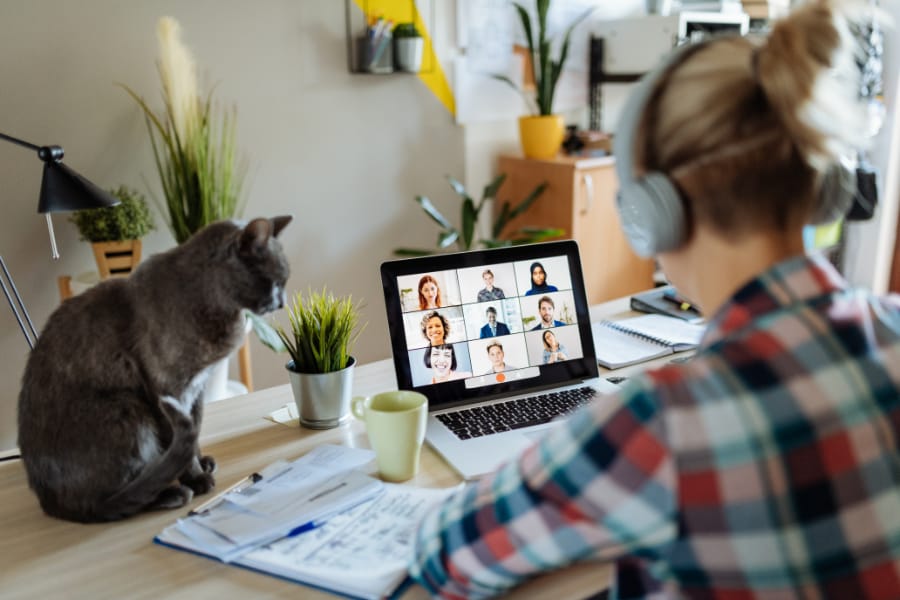How to Futureproof a Multi-Residential Building Investment

Tenant satisfaction should be your top priority for any multi-residential commercial property investment. The best way to futureproof such investments is to utilize building security softwares, building management systems, and building hygiene technologies. These softwares play a huge role in improving the tenant experience in your residential buildings, and are the future of multi-family housing.
Keep reading to learn how to futureproof a multi-residential commercial property and raise tenant satisfaction levels.
Top 7 Ways to Futureproof a Multi-Residential Building
Here are some of the best technologies and tips for futureproofing your multi-residential building to encourage tenant satisfaction and increase retention rates. Consider implementing these technologies in your facility for a more modern and sophisticated approach to building security and commercial building management.
1. Integrate Cyber & Physical Security

With the increased use of cloud-based technologies in multi-residential building security, the distinction between cyber and physical security is becoming less apparent.
This is because cloud-based security systems are part of a physical security system that protects digital assets, such as servers stored within the building. When you integrate cyber and physical security, you establish a future-proof approach to security in your business.
Here are some of the ways you can integrate cyber and physical protection:
- Use cybersecurity to secure a cloud-based security system – The remote capabilities of a cloud-based system should remain in the hands of authorized users only. If a third party intercepts these capabilities, this could lead to a significant security breach. Combining both physical and digital security strengthens the system overall.
- Use physical security measures to protect digital assets – By installing an access control solution in a building and using it to restrict areas that house sensitive digital assets, you can combine physical and digital security for a stronger, blended security strategy.
2. Adopt Touchless & Hygiene-Based Technologies
Touchless and hygiene-based technologies are compelling features for tenants. Since the pandemic, tenants have become increasingly aware of the need for adequate health and safety measures in their buildings. You can adopt touchless access control in your building to mitigate the spread of germs when tenants enter and exit the property.
Touchless access control automatically opens doors, so your tenants won’t need to use a pin pad or door handle when entering their building. Reducing touchpoints like door handles and pin pads significantly reduces the potential of germs spreading in your multi-residential property. It’s also the future of multi-family housing becoming more secure.
Additionally, use antimicrobial surfaces to reduce the presence of germs at touchpoints in the building. The buttons in your elevators and handrails within the building can be covered with anti-microbial surface materials to ensure your spaces remain virus-free. This also removes the need for cleaning services to decontaminate these surfaces frequently.
3. Integrate Technologies With Your Building Security System
Access control serves as an excellent foundation for any adept building security system. Cloud-based access control also presents the opportunity to create an integrated security system that will be more user-friendly for your tenants, security staff, and property managers.
4. Visitor Management Software

Visitor management software is a streamlined solution that allows you to keep an accurate log of visitors without hiring a receptionist in your building. Before visitors gain access to the building, they must complete digital registration forms on their mobile devices. This will grant them temporary access credentials, allowing them to enter the building.
Once they leave the building, the system will revoke their temporary access credentials and log them out. If a crime occurs in your building, you will have the details of all visitors who entered the property that day, ensuring air-tight security procedures.
5. Wellness Verification Software
Integrating a wellness verification software with your access control system can ensure your building stays free of visitors with coronavirus symptoms. A wellness verification software requires users to complete a survey based on their symptoms before entering the building. Visitors who are symptomatic will not be granted access to the building. The system will also recommend that they take a coronavirus test or complete another recommended procedure.
6. Building Management Systems
Building management triggers can be integrated with your access control system. When a user enters one of the amenities or facilities in your multi-family residential building, the electricity, heating, and lighting will turn on.
When nobody is occupying the space, the energy in that room will be switched off. This is an excellent integration that can significantly reduce your monthly overheads and reduce the carbon footprint of daily building operations and improve your building’s energy efficiency.
7. Integrating Video Camera Feed & Access Control Technology

One of the key security risks of an access control system is misappropriated access credentials. If an unauthorized user gets hold of access control credentials for your building, this could lead to a security breach. But, to avoid this, integrate a video camera feed and access control technology to verify user identity.
A modern video intercom system for apartments has both sets of technology in one device. All data can be viewed on one interface using the mobile app or a cloud-based control center.
Summary
Softwares are the future of multi-family housing. To ensure your tenants are satisfied with property management in their residences, it’s essential to consider safety and convenience. By using touchless and hygiene-based technologies and enhancing building security, you can increase your tenants’ feeling of safety.
The convenience of these technologies, and the feeling that their landlord cares about their health and safety, can increase tenant satisfaction and retention. The more satisfied your tenants are, the more likely they are to stick around long-term.
Are you looking to sell a multi-family investment in Philadelphia? Brotherly Love Real Estate are your local property experts. We buy properties with tenants for cash, helping you sell a development quickly and easily. Contact us to get your cash offer today.
